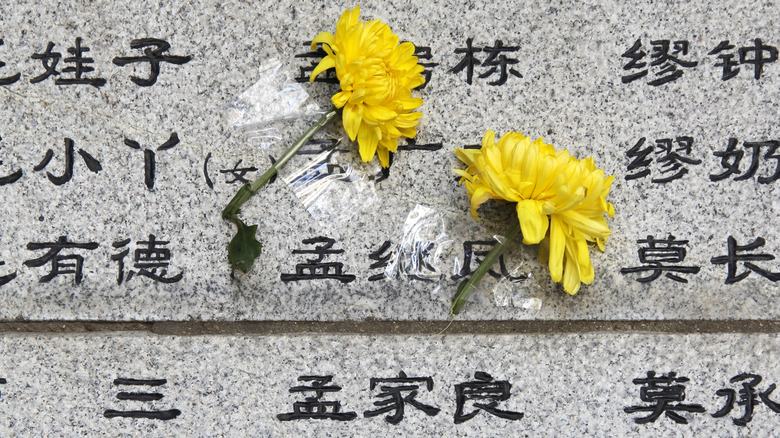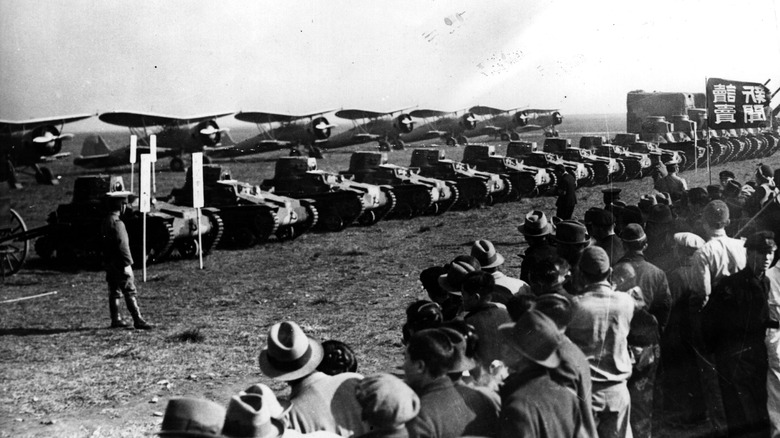The Tragic Truth About The Nanking Massacre
The six years that spanned World War II, and the bloody battles that preceded it, contained not only widespread devastation and the deadliest conflict in human history, but also some of the most heinous and tragic acts of mass murder our species has ever committed. While the Holocaust and the atomic bombing of Hiroshima and Nagasaki are widely discussed and taught in schools, the Nanking Massacre is less well-known — and in some cases, completely denied, even over eight decades on from the horror.
Nanking, also spelled Nanjing, was the capital of Nationalist China in 1937 when the Imperial Japanese Army earned victory at Shanghai during the Sino-Japanese War that predated World War II (via History). General Matsui ordered the capture and subsequent destruction of Nanjing next. The Chinese government withdrew its troops from the capital, but forbade the evacuation of citizens in a futile effort to hold onto the city. In November, a collection of businessmen and missionaries formed an International Committee and set up a neutral Nanking Safety Zone; by the next month, the Japanese Army had arrived, leaving a path of destruction and devastation behind them.
Rogue individuals or forgotten Holocaust?
Following the Battle of Nanking, Japanese soldiers took over the mostly defenseless city and began what was to be known as the Nanking Massacre, or the Rape of Nanking, as anywhere from 20,000 to 80,000 women were gang-raped and summarily executed, and whole families were hunted down and murdered. First-hand accounts describe the daily devastation of Nanking's residents and disarmed soldiers, many taken from their homes for no reason to be killed by bullet or bayonet.
Few numbers have caused such scholarly debate as the death toll estimates of the Nanking Massacre. The number 300,000 is displayed prominently at memorials and is the higher end of commonly accepted estimates. Some Japanese scholars claim that the numbers are greatly exaggerated, and that the actual toll is somewhere from 40,000 to only several hundred, claiming the massacre was the act of a few rogue individuals rather than the army at large. According to the Atlantic, some Japanese politicians deny the massacre entirely. Estimates of around 100,000 to 200,000 deaths are the most widely accepted today, yet still the horrors of Nanking are ignored or unknown by many around the world.

